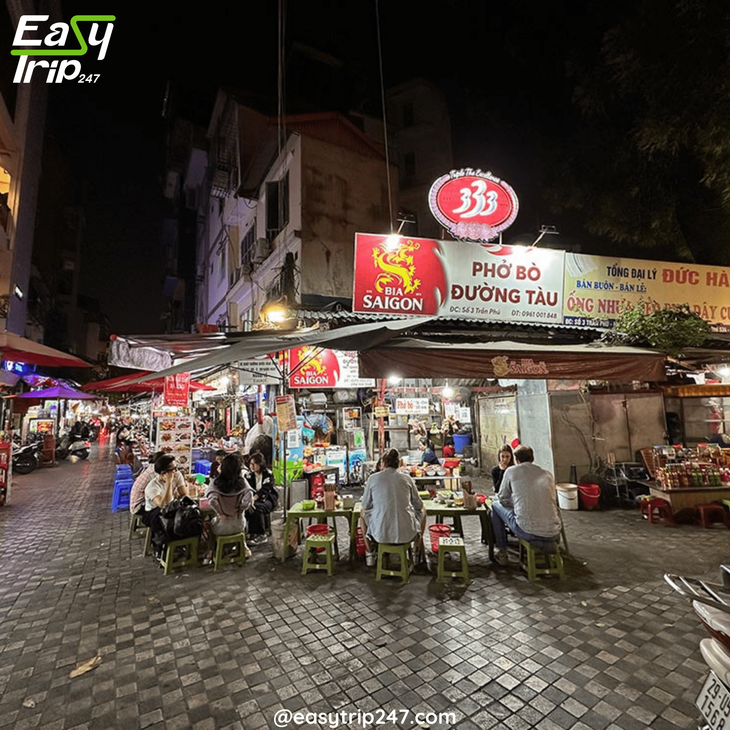
The beauty of Hanoi lies not only in its historic landmarks but in the lively streets, charming alleys, and the bustling energy that fills the air. Whether you’re an experienced traveler or a first-time visitor, preparing for a walking tour in Hanoi is essential to make the most of your experience. To ensure that you are ready to embark on your journey through Hanoi’s colorful streets, markets, lakes, and temples, it’s important to plan your trip in advance and be prepared for the distinct elements that come with exploring this dynamic city. This guide will give you everything you need to know to prepare for the ultimate walking tour in Hanoi, from essential packing tips to advice on navigating the streets and understanding the local culture.
The Essence of a Walking Tour in Hanoi
Hanoi, with its narrow streets, ancient buildings, and a mix of French colonial and traditional Vietnamese architecture, is best experienced on foot. A walking tour in Hanoi allows you to move at your own pace and truly immerse yourself in the sights, sounds, and flavors of this captivating city. The Old Quarter, with its maze of streets and rich history, is a great place to begin your walking tour. Here, you can walk through lively markets, sample authentic street food, and admire the charming colonial buildings that still stand today. A walking tour in Hanoi also gives you the chance to visit the city’s iconic landmarks like Hoan Kiem Lake, the Temple of Literature, and the Ho Chi Minh Mausoleum, each of which holds a special place in the hearts of the locals.
Whether you are looking to explore Hanoi’s history, try its famous street food, or just enjoy the atmosphere, a walking tour in Hanoi will allow you to do it all. The beauty of a walking tour is that you can take your time, get off the beaten path, and even stumble upon hidden gems you wouldn’t have otherwise discovered by car or bus. Now that you understand the essence of what makes a walking tour in Hanoi so special, let’s dive into how to properly prepare for your adventure.
1. Choose the Best Time for Your Walking Tour
One of the most important factors to consider when preparing for a walking tour in Hanoi is the time of year. Hanoi experiences four distinct seasons, and the weather can vary greatly depending on the time of your visit. The best time for a walking tour in Hanoi is usually during the spring (March to April) and autumn (September to November) months when the weather is mild and pleasant. During these seasons, temperatures range from 18°C to 25°C (64°F to 77°F), making it ideal for long walks through the city’s streets.
If you visit in the summer (May to August), be prepared for high temperatures and high humidity, which can make walking in the city feel more challenging. However, this is also the time when Hanoi’s streets are most lively, and the abundance of fresh fruits and iced drinks makes it a fun time to explore. Winter (December to February) brings cooler temperatures, often dipping as low as 10°C (50°F), so packing layers will be essential. Regardless of when you visit, a walking tour in Hanoi will always be an adventure—just be sure to prepare according to the season!
2. Wear Comfortable and Practical Footwear
When preparing for your walking tour in Hanoi, one of the most important considerations is your footwear. Hanoi’s streets can be narrow, crowded, and sometimes uneven, making comfortable shoes essential. Opt for well-fitted sneakers, supportive sandals, or lightweight walking shoes that will allow you to comfortably navigate the city for hours. Avoid wearing shoes with heels or sandals that don’t offer support, as the streets can sometimes be slippery, especially after rain.
A walking tour in Hanoi often includes visits to parks, markets, temples, and lakes, all of which require walking long distances. Wearing the right shoes will help prevent blisters and discomfort, ensuring you can fully enjoy your adventure. Be sure to break in your shoes before your trip to avoid any issues during your tour.
3. Pack Light, But Pack Smart
While you may be tempted to pack everything for your walking tour in Hanoi, it’s best to keep things light and simple. Since you’ll be walking around the city, carrying heavy bags can become tiresome. Instead, pack only the essentials in a lightweight backpack or crossbody bag. Here’s a list of items you’ll want to bring with you on your walking tour in Hanoi:
● Water Bottle: Hanoi can get hot, especially during the summer months, so it’s important to stay hydrated. Carrying a reusable water bottle will ensure you have easy access to water throughout your tour.
● Sunscreen: Protect your skin from the sun’s rays, especially if you’re walking around during the day. Hanoi can be sunny and warm, so sunscreen is a must to avoid sunburn.
● Map or Guidebook: While walking around Hanoi, having a map or a guidebook with you can be helpful. Though the city’s streets are easy to navigate, a guidebook or map can help you locate important landmarks and hidden gems along the way. Alternatively, consider downloading a digital map app on your smartphone.
● Snacks: You never know when you’ll come across a delicious street food stall, and having a few snacks on hand can keep your energy levels up throughout the day. Grab some fruit, nuts, or energy bars before you head out for your walking tour in Hanoi.
● Camera or Smartphone: Don’t forget to bring your camera or smartphone to capture the beauty of the city! From the temples and lakes to the bustling markets and food stalls, Hanoi’s streets offer plenty of photo opportunities during your walking tour in Hanoi.
4. Prepare for Hanoi’s Street Food Culture
No walking tour in Hanoi would be complete without sampling some of the city’s famous street food. Hanoi is a foodie’s paradise, offering delicious dishes like pho, bun cha, banh mi, and egg coffee. As you stroll through the streets, you’ll be tempted by the tantalizing smells of sizzling skewers, fresh noodles, and sweet treats. However, preparing for street food in Hanoi means knowing what to expect in terms of hygiene and local customs.
While street food in Hanoi is generally safe to eat, it’s important to choose vendors that appear clean and busy. A good rule of thumb is to pick a stall that has a high turnover of customers, as this ensures the food is fresh. Don’t be afraid to ask locals for recommendations on where to find the best street food in Hanoi—locals are often happy to share their favorite spots with travelers.
If you’re sensitive to spicy food, be sure to ask the vendor to tone down the heat. Also, consider bringing some hand sanitizer or wet wipes to clean your hands before eating, as many street food stalls don’t offer utensils or napkins.
5. Be Ready to Embrace Hanoi’s Unique Traffic
One thing that can be quite overwhelming when preparing for a walking tour in Hanoi is the city’s traffic. Hanoi is known for its chaotic streets, where motorbikes, bicycles, cars, and pedestrians all share the road. Crossing the street in Hanoi can be a daunting task, but with a little patience and confidence, you’ll get the hang of it.
When crossing the road, maintain a steady pace and make eye contact with drivers. Don’t rush, and try to stay calm. The key to crossing the street in Hanoi is to walk confidently and let the traffic navigate around you. Motorbike riders are accustomed to weaving through pedestrians, so giving them clear signals with your movements will help keep things safe.
6. Plan Your Route and Include Breaks
A walking tour in Hanoi can last several hours, so it’s important to plan your route in advance and incorporate breaks along the way. Some of Hanoi’s most popular attractions, such as the Old Quarter, West Lake, and the Temple of Literature, are spread out across the city. By planning your route strategically, you’ll be able to visit key landmarks without wasting time backtracking.
Take regular breaks to relax, hydrate, and enjoy the sights. Find a local café or park bench to sit and rest while soaking in the atmosphere. You’ll find that taking your time and savoring the experience is one of the most rewarding aspects of a walking tour in Hanoi.
7. Respect Local Customs and Culture
As with any cultural destination, it’s essential to respect the local customs when preparing for a walking tour in Hanoi. The Vietnamese are known for their hospitality, but it’s important to be mindful of local traditions. When visiting temples, always dress modestly, covering your shoulders and knees. Remove your shoes when entering religious sites, and avoid making loud noises or gestures.
By respecting local customs and etiquette, you’ll have a more enriching experience and connect better with the locals during your walking tour in Hanoi.
Conclusion: Ready for the Ultimate Walking Tour in Hanoi
With the right preparation, a walking tour in Hanoi can be an unforgettable experience that allows you to connect with the heart and soul of this remarkable city. From wearing comfortable shoes and packing light to embracing the street food culture and understanding the traffic, preparing for your walking tour is key to ensuring a smooth and enjoyable adventure. Whether you’re exploring the lively streets of the Old Quarter or wandering around the serene West Lake, each step you take will lead you closer to the unique charm that makes Hanoi so special. So, lace up your shoes, pack your essentials, and get ready for the ultimate walking adventure in Hanoi—you’re about to embark on a journey that will leave you with unforgettable memories and a deeper appreciation of Vietnam’s capital.
Design Your Tour Today And Get A Quote. Contact Us Here: +84.975.504.825
Source: Easytrip247 Team compiled.
